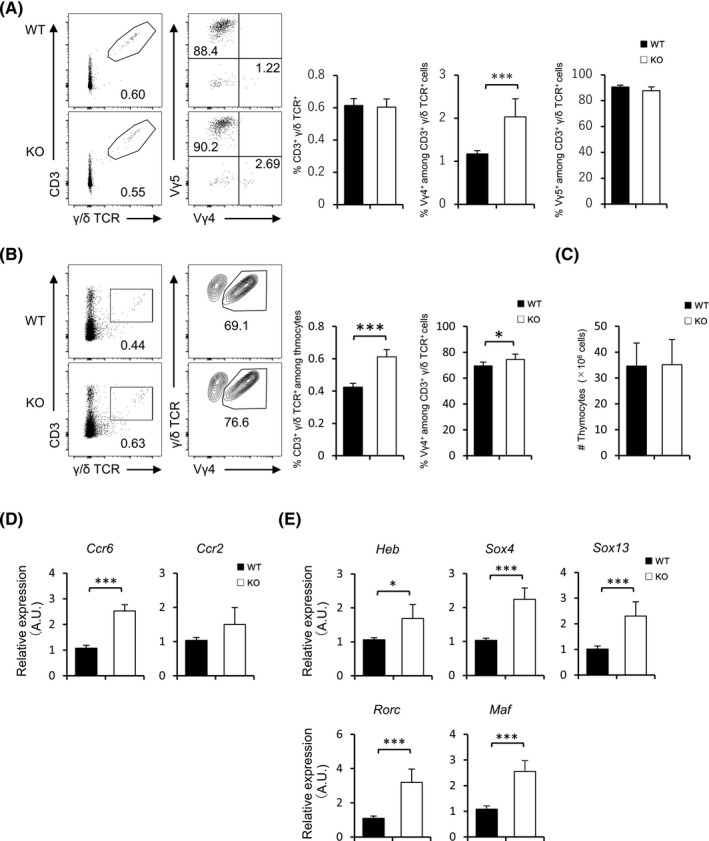FIGURE 4.

Juvenile FABP3‐deficient mice showed more abundant Vγ4 + γ/δ T cells. (A, B) Frequency (left) and number (right) of CD3+ γ/δ TCR+, Vγ5+, and Vγ4+ γ/δ T cells in the skin (A) and thymus (B) of juvenile WT and Fabp3 −/− mice. (C) The number of thymocytes in juvenile WT and Fabp3 −/− mice. (D, E) Ccr6 and Ccr2 (D) and Heb, Sox4, Sox13, Rorc, and Maf (E) mRNA expression of sorted dermal Vγ4+ γ/δ T cells in juvenile mice. Results are normalized to those of Gapdh and are presented relative to those of WT Vγ4+ γ/δ T cells. *P < .05, ***P < .001 (Student's t test). Data are from one experiment representative of three independent experiments with similar results (A‐E) (mean ± SEM of three replicates (A‐E))
